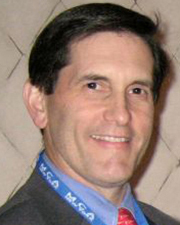New York City fire sprinkler laws: Let’s learn from the Triangle Shirtwaist/Father’s Day fires - by Tony Saporito

Contractors Association of NY
NYC ended 2017 on a somber note, as fire-related fatalities rose 35% to 73 deaths in the year, as compared with a record low 48 deaths the year prior.
The end of last year was particularly grim, with 26 deaths in Dec., including a Dec. 28 fire that killed 13 people in a building in the Bronx – NYC’s deadliest in 27 years.
The majority of these fires occurred in residential buildings. Since 1999, there has been no major mandatory fire sprinkler legislation passed in NYC.
Under the current law, older residential buildings do not have to be retrofitted with fire sprinklers unless they have undergone major renovations. This is despite the fact that modern fires burn hotter, more toxic and 800% faster due to petroleum-based furnishings and other materials. The National Fire Protection Association found that from 2010-2014, the death rate per 1,000 reported fires was 87% lower in properties where fire sprinklers were present. It proves sprinklers are a game changer!
Lawmakers have unfortunately been too slow in enacting sprinkler laws for residential buildings and in closing the existing loopholes to protect more people. This same legislative body, however, have made very good progress in modernizing the fire suppression capabilities of industrial and commercial buildings.
Following the death of three FDNY firefighters during a 2001 Father’s Day blaze, the NYC council passed a law in 2002 that required automatic fire sprinklers in all mercantile occupancies that housed flammable or combustible mixtures.
Previously, such buildings were only required to have smoke alarms, meaning workers, residents in neighboring buildings and firefighters were much more vulnerable to a building fire fueled by accelerants.
In 2004, the city council passed a law mandating that all existing office buildings that stood at least 100 ft. tall be equipped with fire sprinklers by 2019, as it was deemed that smoke detectors were no longer sufficient protection. In both cases, laws were needed to ensure that these life-saving measures were guaranteed for the people who worked inside these buildings, ultimately not only saving lives but protecting property as well.
Lawmakers passed a series of supplementary laws in the following decade, such as one that restricted the job of cutting or capping of standpipes to licensed master fire piping contractors and licensed master plumbers as well as another requiring all standpipes to have pressurized alarm systems.
The most recent law required all animal facilities, such as kennels and veterinary clinics, to be protected by automatic fire sprinklers.
New York has traditionally been a leader in cutting edge fire safety, even if positive developments have usually come only after tragedy.
For years, factories, workspaces and office buildings completely lacked any sort of fire protection, despite the presence of flammable machinery and materials.
One of the most infamous of these examples was the Triangle Shirtwaist Factory Fire in 1911. After a fire began on the eighth floor, 146 workers, most of them young immigrant women, perished due to fire-related injuries, smoke inhalation or from leaping out of the building’s windows because escape routes were locked or impassable.
Following this massive loss of life, New York lawmakers passed a series of building and worker safety laws to avoid a tragedy of this magnitude from happening again. In the wake of that fire, the American Society of Safety Engineers was established to help prevent workplace fatalities, injuries and illnesses via risk-based approaches.
We must continue taking lessons from the Triangle Shirtwaist fire, as well as the Father’s Day fire and other such incidents, constantly reassessing how we can make buildings safer.
While lawmakers have deemed that buildings which are empty at night or temporary homes for animals should be equipped with fire sprinklers, it is frustrating that they still cannot see the same measures necessary for buildings which residents call home. It is time for New York to fully protect New Yorkers from fire-related injury or worse, regardless of what type of building they are in.
Tony Saporito is the executive VP of the Mechanical Contractors Association of New York, Inc., New York, N.Y.
Troutbrook expands with boutique condo project and Marriott Fairfield Inn & Suites renovation








.gif)
.jpg)

.gif)